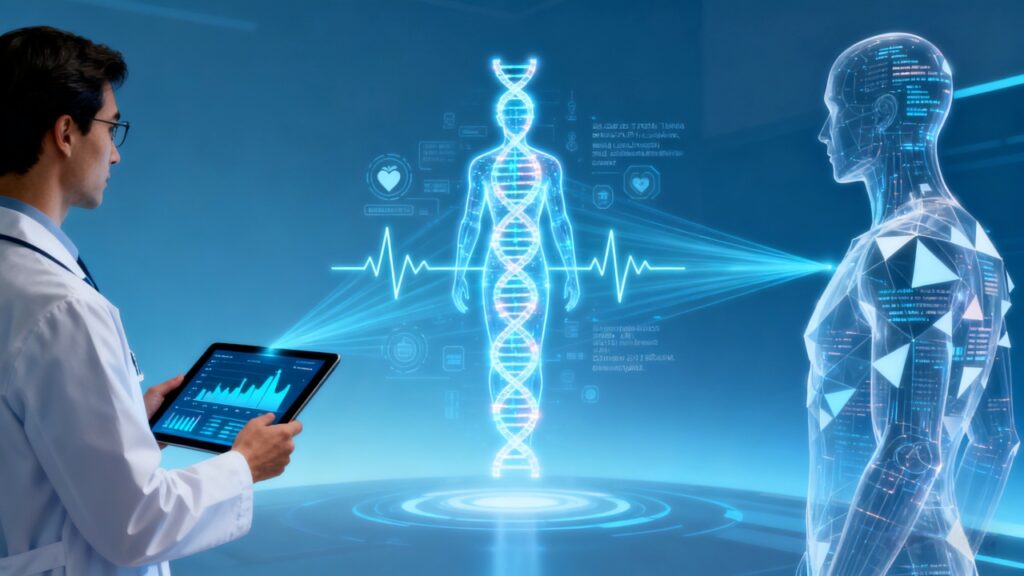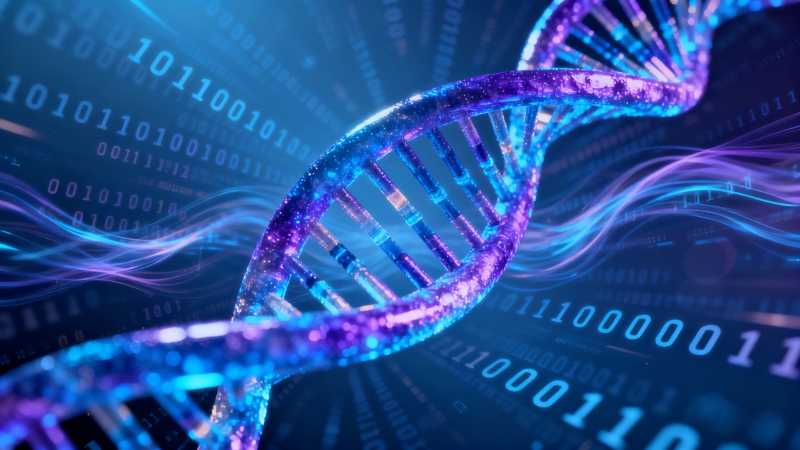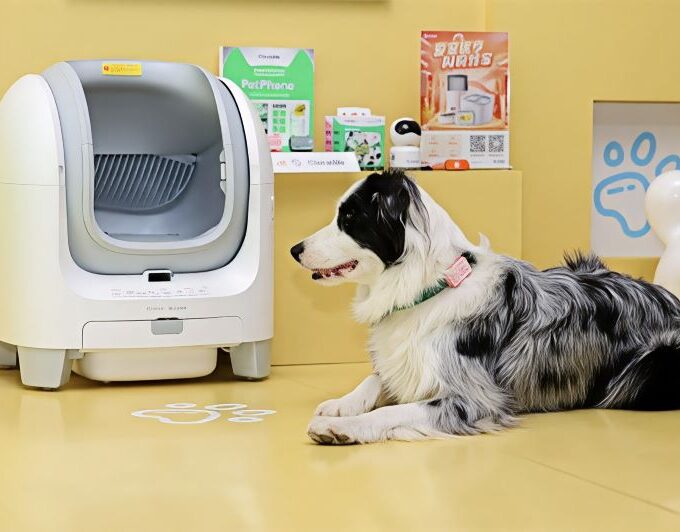The human body is composed of approximately 30 trillion cells, with nearly one billion chemical reactions occurring in each cell every second. The scale of life activities within a single minute is so vast that even a figure like “100 quadrillion” can only describe the tip of the iceberg.
In recent years, scientists have been delving deeper into the interior of cells, from the cell nucleus to the genome, gradually uncovering the complexity of the microscopic world. They have discovered that most human diseases are not caused by a single factor, but by the combined action of intricate biological networks. Faced with the vast amount of life data, traditional methods are struggling to cope. Today, using AI is becoming a new trend to analyze this data.
Deciphering the “Grammar of Life”
AI is offering a groundbreaking perspective to reinterpret biology: it treats protein sequences as a language that can be decoded.
Just as natural language is composed of letters and punctuation marks, proteins— which form cells, bones, and muscles— are made up of chains of amino acids. Biologists have found that large language models (LLM) can also be used to identify potential patterns in these amino acid chains.
Eric Kelsic, CEO of Dyno Therapeutics in the United States, admitted, “I once thought proteins were too complex to understand. But there is inherent order in the data, such as which amino acids can be placed in specific positions of a capsid. Now, we can use AI to automatically analyze data and discover patterns that are difficult for humans to detect.” The company is using AI to design viral capsids, aiming to achieve safer and more effective gene therapies.
AI’s efficient analytical capabilities mean that companies like Dyno can develop gene therapy vectors for rare diseases. If AI can customize gene therapies for each individual, healthcare will truly move toward personalization and scalability. In the long run, any disease related to genes— from heart disease to obesity— is expected to be redefined. At that point, people will no longer view the genome as a fixed destiny, but as an editable “life script”.
Finding the “Pause Button” for Life
If AI can interpret life, can it also help humans preserve life?
For more than 60 years, scientists have been trying to safely cryopreserve the human body, waiting for future technologies to revive it. If biological tissues can be safely frozen and thawed, the medical field will undergo dramatic changes. For example, organs could be cryopreserved for transplantation, and patients with terminal illnesses could be frozen to await revival after a cure is found.
Wake Bio, a biotech startup founded by former Google Brain scientist Mark Woodward, is using machine learning to develop technology for full-body cryopreservation. Its focus is on developing “cryoprotectants“— chemical mixtures that protect the integrity of cells during the freezing and thawing process.
The number of possible ingredient combinations for cryoprotectants is nearly infinite. AI can screen the optimal solution from billions of candidate molecules and conduct tests in a virtual environment. “We feed the experimental results back to the model, which then puts forward new hypotheses, predicts outcomes, and iterates in a cycle, constantly approaching a feasible solution,” Woodward explained.
This model of “digital experimentation” is sweeping the life sciences field. Humans set the direction, and AI carries out the deductions. The role of scientists is shifting from operators to guides of AI.

Accelerating Scientific Discovery
While the AI models of Wake and Dyno are designed for very specific tasks, the non-profit research institute “House of the Future” has a more ambitious goal.
“The human genome contains 20,000 genes. You can neither study them all nor remember all the discoveries made about them,” said Samuel Rodriguez, CEO of the House of the Future. “What we need is AI that can think, hypothesize, and verify independently.”
The House of the Future is committed to accelerating scientific research through AI agents. Its AI models can analyze biological data, generate new scientific hypotheses, and verify these hypotheses through digital experiments. The time and cost required for these processes are only a fraction of what human scientists would need.
On May 20 this year, the institute demonstrated a multi-agent scientific discovery workflow, aiming to implement key steps in an automated scientific process and identify a new candidate drug for the treatment of dry age-related macular degeneration. In June, the institute released ether0, an open-weight AI chemical reasoning model with a size of 24 billion bytes.
A series of AI scientific agents developed by the institute can already process experimental data, review literature, design experimental procedures, and predict molecular interactions. Especially in fields like new drug development— which are high-cost, long-cycle, and interdisciplinary— such systems are expected to compress decision-making processes that once took years into seconds, significantly reducing the cost of new drugs and making them available to patients faster.
Reversing the Aging Clock
Retro Biosciences, a U.S.-based company deeply engaged in this field, is trying to use AI to crack the code of aging.
Inspired by protein language models, Joe Tsien-Lacroix, the company’s CEO, believes that similar technologies can be extended to the study of more biological data. His team is focusing on cellular aging— a process accompanied by protein dysfunction, which eventually leads to age-related diseases such as cancer and Alzheimer’s disease. Reversing aging requires understanding how cells regulate millions of proteins, a task far beyond human capability.
In collaboration with OpenAI, Retro has developed generative models capable of understanding protein mechanisms. Using these models, the company has improved the “Yamanaka factors”— a set of genes that can reprogram cells to return to a youthful state— increasing their reprogramming efficiency by up to 50 times. Once widely applied, cell reprogramming technology may enable the human body to achieve biological rejuvenation, delaying or even reversing the aging process.
However, AI also brings about the “black box” problem. After all, no one can explain its decision-making mechanism step by step, which makes many people feel uneasy. Currently, people can still choose to wait and see. But as AI continues to integrate into medicine, it is gradually becoming an unavoidable force. Perhaps in the near future, when faced with treatment plans provided by AI, people will not just “have to try” them, but will see them as a new opportunity to extend life and improve health.












